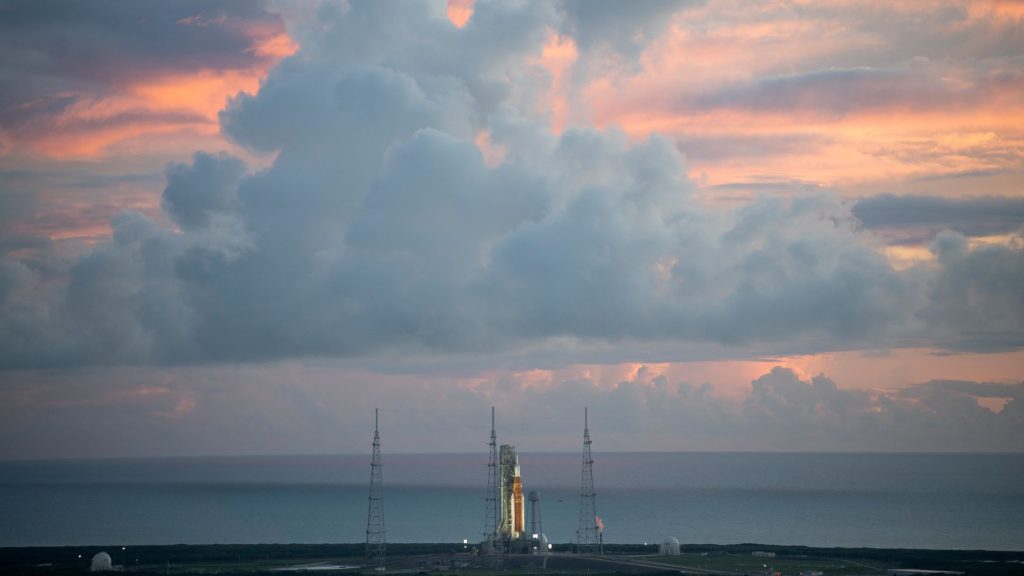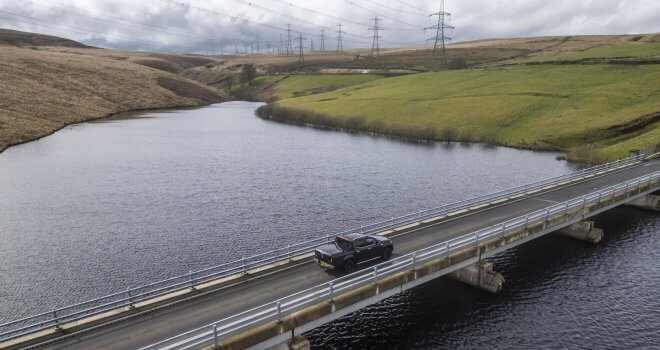NASA Delays Debut Artemis Flight Of New Moon Rocket After Engine Cooling Issue

An engine-cooling problem forced NASA on Monday to postpone for at least four days the debut test launch of the colossal new rocketship it plans to use for future astronaut flights back to the moon, more than 50 years after Apollo’s last lunar mission.
The space agency declined to set a precise time frame for retrying a launch of the mission, dubbed Artemis I. But a second attempt was still possible as early as Friday, depending on the outcome of further data analysis, senior NASA officials told a news briefing hours after the aborted countdown.
If engineers can resolve the issue on the launch pad in the next 48 to 72 hours, “Friday is definitely in play,” Michael Sarafin, NASA’s Artemis mission manager told reporters.
The planned journey marks the kickoff of NASA’s highly vaunted moon-to-Mars Artemis program, the successor to the Apollo lunar missions of the 1960s and ’70s, and the first voyage of both the Space Launch Vehicle (SLS) rocket and its Orion astronaut capsule.
The mission calls for a six-week, uncrewed test flight of the Orion capsule around the moon and back to Earth for a splashdown in the Pacific.
The malfunction on Monday surfaced as the rocket’s fuel tanks were being filled with super-cooled liquid oxygen and hydrogen propellants at the Kennedy Space Center in Cape Canaveral, Florida.
Launch teams had begun a “conditioning” process to chill the four main SLS engines sufficiently, but one engine failed to cool down as expected, NASA said. The flight was called off two minutes after the targeted launch time.
Late-hour launch postponements are routine in the space business, and Monday’s was not in itself an immediate indication of a major setback for NASA or its primary contractors, Boeing Co for SLS and Lockheed Martin Corp for Orion.
“We don’t launch until it’s right,” NASA chief Bill Nelson said in a webcast interview after liftoff was scrubbed. “This is a very complicated machine, a very complicated system, and all those things have to work. And you don’t want to light the candle until it’s ready to go.”
Still, the delay was a disappointment to thousands of spectators who gathered on the shores around Cape Canaveral, with binoculars in hand. Vice President Kamala Harris had just arrived at the space center, joining a throng of invited guests attending the event.
The voyage is intended to put the 5.75-million-pound vehicle through its paces in a rigorous demonstration flight, pushing its design limits, before NASA deems it reliable enough to carry astronauts in a subsequent flight targeted for 2024.
Billed as the most powerful, complex rocket in the world, the SLS represents the biggest new vertical launch system the U.S. space agency has built since the Saturn V rocket flown during Apollo, which grew out of the U.S.-Soviet space race of the Cold War era.
Due to the complexity of the issue that emerged on Monday and constraints on how long a rocket is permitted to remain at a launch tower before blastoff, the spacecraft could end up being rolled back to its vehicle assembly building if trouble-shooting and repairs drag on for too long.
Such a move would involve a more extended delay than a few days or a week. But NASA officials said they were not ready to make that call yet.
Monday’s show-stopping technical snag was foreshadowed weeks ago during NASA’s pre-launch “wet-dress rehearsal” tests of the SLS, when a problem with a hydrogen fuel line on the rocket forced engineers to forgo a full engine-conditioning test.
NASA officials opted to proceed to final launch preparations and essentially defer the first conditioning run-through until the actual countdown, acknowledging then that such a strategy could end up causing a liftoff delay, as occurred on Monday.
One additional hitch was a “vent valve” problem that hampered engineers’ ability to place sufficient pressure on a hydrogen fuel tank, Sarafin said.
NASA officials said they expected to gain greater clarity on next steps after a meeting set for Tuesday to review data collected from the launch attempt.
FIVE DECADES SINCE HUMANS LAST ON MOON
If the first two Artemis missions succeed, NASA is aiming to land astronauts back on the moon, including the first woman to set foot on the lunar surface, as early as 2025, though many experts believe that time frame is likely to slip by a few years.
The last humans to walk on the moon were the two-man descent team of Apollo 17 in 1972, following in the footsteps of 10 other astronauts during five earlier missions beginning with Apollo 11 in 1969.
The Artemis program seeks to eventually establish a long-term lunar base as a stepping stone to even more ambitious astronaut voyages to Mars, a goal that NASA officials have said will probably take until at least the late 2030s to achieve.
The program was named for the goddess who was Apollo’s twin sister in ancient Greek mythology.
SLS has been under development for more than a decade, with years of delays and cost overruns. But Artemis also has generated tens of thousands of jobs and billions of dollars in commerce.
Although no humans will be aboard, Orion will be carrying a simulated crew of three – one male and two female mannequins – fitted with sensors to measure radiation levels and other stresses that real-life astronauts would experience.
(Reporting by Joey Roulette and Steve Gorman; Editing by Andrew Cawthorne and Alistair Bell)




